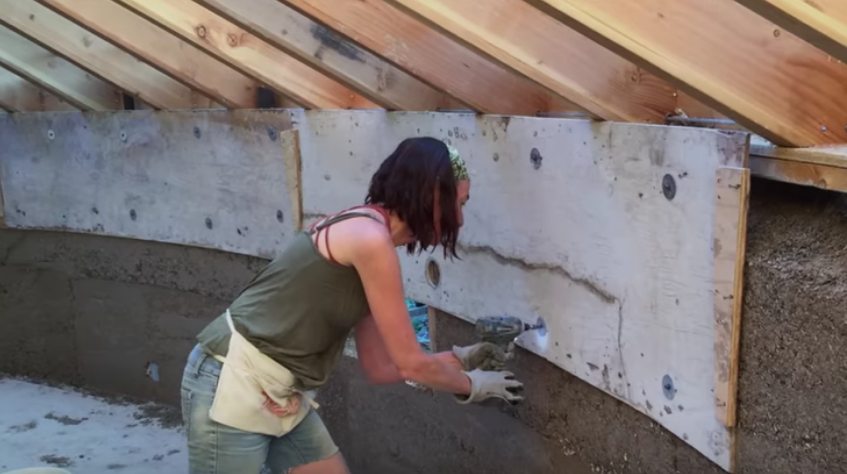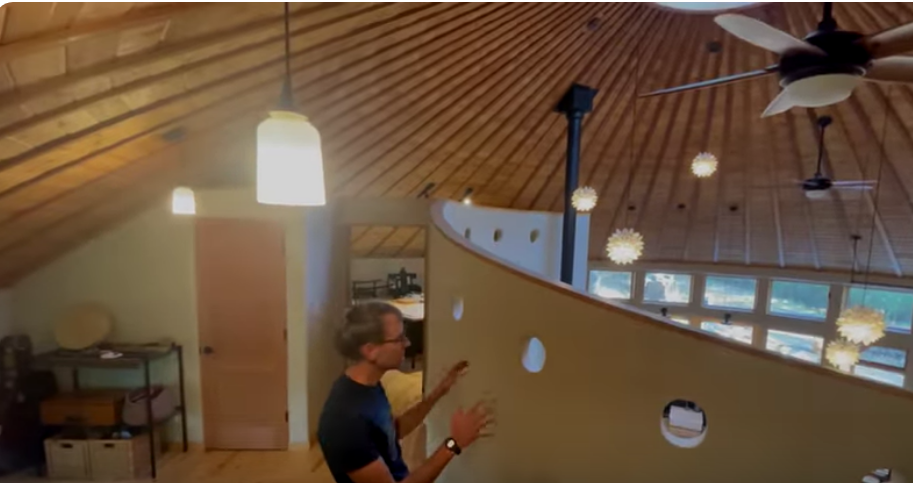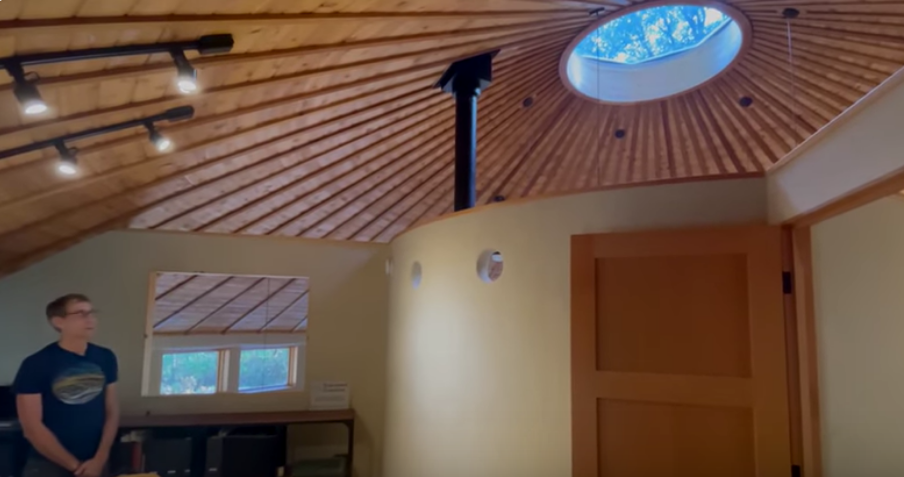Concerned about indoor air quality, Neil Decker and Stella Michaels wanted their home to be chemical-free, so they decided to build it out of hempcrete (hemp, lime, and sand). The couple didn’t think they could afford to live in California but found a rundown property in Gold Rush old country on the Western Slope of Sierra Nevada just outside Nevada City (above 2500 feet, with cold winters), where they moved into a fifth wheel trailer while constructing their home.
 They had experience building with earthbags but felt it was too hard on the body. They knew hempcrete was lightweight and was easy to work with. They were able to raise half the house in 5 days. They then trained and hired local students to help finish the exterior build just before the winter rains. They then let the house get wet and dry during the winter, which helps to harden the lime before adding a lime plaster to the exterior. The couple added clay plasters to the walls for the interior and laid an earthen floor.
They had experience building with earthbags but felt it was too hard on the body. They knew hempcrete was lightweight and was easy to work with. They were able to raise half the house in 5 days. They then trained and hired local students to help finish the exterior build just before the winter rains. They then let the house get wet and dry during the winter, which helps to harden the lime before adding a lime plaster to the exterior. The couple added clay plasters to the walls for the interior and laid an earthen floor.
 The couple was told by locals that they wouldn’t be able to get hempcrete approved, but the local building department told them as long as they met the codes for insulation value and raking strength, there should be no problems. And in 2016, they were the first hempcrete home approved in California.
The couple was told by locals that they wouldn’t be able to get hempcrete approved, but the local building department told them as long as they met the codes for insulation value and raking strength, there should be no problems. And in 2016, they were the first hempcrete home approved in California.
 Decker explains that not only is hempcrete extremely durable, but it’s also fire and earthquake-resistant and can help with indoor air quality since it’s very breathable and mold-reducing.
Decker explains that not only is hempcrete extremely durable, but it’s also fire and earthquake-resistant and can help with indoor air quality since it’s very breathable and mold-reducing.
Decker had spent a lot of time in yurts as a ski guide, and he liked how it felt to live in a circular structure, so they decided to design a perfectly round home. They spent 2 years observing how energy flowed through their property to choose a building site.
 Inspired by Earthship design, the home is passive solar with nearly all glass on the south, passive cooling with a 6-foot openable skylight controlled by a thermostat that allows heat to escape when indoor temperatures rise above 75 degrees F.. Cooling tubes are buried 5ft underground and run 50 ft in front of the home to cool ambient air outside the house’s interior. Cool air is passively pulled into the tubes as hot air escapes out of the skylight in the summer.
Inspired by Earthship design, the home is passive solar with nearly all glass on the south, passive cooling with a 6-foot openable skylight controlled by a thermostat that allows heat to escape when indoor temperatures rise above 75 degrees F.. Cooling tubes are buried 5ft underground and run 50 ft in front of the home to cool ambient air outside the house’s interior. Cool air is passively pulled into the tubes as hot air escapes out of the skylight in the summer.
You can watch the video at www.youtube.com


Surprised that solid walled yurt made it through all those light-years of red tape!
Very nice design….but….rainwater storage….composting toilets…..greywater?
What i most dislike is the lack of overall money plus labor evaluation…..fe…styro aircrete on a wood, steel, or a bamboo frame could empty the landfills of the world of their styrofoam, meanwhile using very little concrete, or embodied energy, fe. Look up bamboo as a building material, it is amazing, and will make cheap insulation in an aircrete wall as well…….hey, i am going to Mexico….wish me luck with the boo aircrete st4uctures!